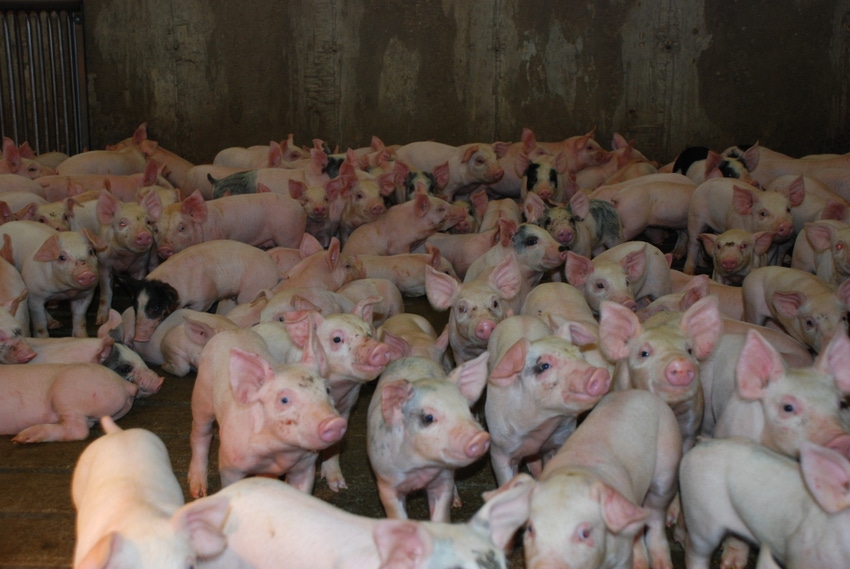Influenza A in swine continues to plague producers; strides being made
As influenza is caused by a virus, there really isn’t a “treatment,” but rather treatment is based on supportive therapy and can include reducing stress, medication to lower fevers and ensuring pigs are as comfortable as possible.
March 28, 2018

By Bryan Myers, Pipestone Veterinary Services veterinarian
Influenza A virus in swine is one of the most common causes of respiratory disease in pigs of all ages. Prior to 1998, influenza (virus) in swine was primarily caused by one serotype, H1N1. Since that time there have been numerous changes to the virus leading to multiple serotypes or strains of influenza. Outbreaks of IAV commonly seen in the spring and fall now occur throughout the year. IAV can be an “epidemic” issue where a group of naïve pigs is affected with IAV, develop clinical signs and the disease resolves after a short period of time. IAV can also be an “endemic” issue where influenza continues to circulate among different animals on a site. Endemic IAV can often be seen in sow farms and continuous-flow growing sites.
Swine influenza primarily affects the airways of the respiratory tract. Acutely affected pigs will have fevers with initial temperatures of up to 105 degrees F. Pigs may show clinical signs of coughing, nasal discharge, sneezing, depression, anorexia and respiratory distress such as thumping or open mouth breathing. IAV is very contagious and through aerosol spread it can move through a population of pigs in a matter of hours. Mortality can vary from mild, in the case of uncomplicated flu, or severe, in the case of flu with secondary diseases present. Economic losses of $5 to $10 per pig may occur depending on the severity of the infection and secondary diseases that may occur.
Swine influenza can be diagnosed by clinical signs, typical lung lesions and a multitude of laboratory tests. Often times a clinical diagnosis is made by an acute onset of coughing in pigs with an acute onset of decreased feed and water intake. Laboratory tests using blood, oral fluids or lungs from necropsied animals can be done rapidly with a diagnosis in 24 hours from when samples are submitted.
Because influenza is caused by a virus, there is not really a “treatment” for the disease. Treatment for IAV infections is based on supportive therapy and can include reducing stress, medication to lower fevers and ensuring the pigs are as comfortable as possible. Ventilation may need to be adjusted for feverish pigs. Monitoring daily water intake is a good measure in identifying a disease issue in its early stages. Identifying an IAV outbreak in its early stages will drastically decrease the effects of the disease. The first indication of an IAV outbreak is decreased water intake. This is often seen prior to any other clinical signs such as coughing or nasal discharge. If possible, medicating the group of pigs with aspirin in the water at the onset of decreased water intake may minimize the clinical effects of the disease, therefore decreasing the need for antibiotic therapy.
In conjunction with aspirin in the water, it is important to walk all pens getting the animals up as often as possible. This will encourage animals to eat and drink sooner. As a virus, it does need to “run its course” and may take several days for pigs to return to normal. In mixed infections of IAV and other diseases, it may be necessary to treat the affected animals with antibiotics. It should be remembered that for an antibiotic to be effective it needs to get into the animal. Sick pigs usually do not eat or drink very well, so individually injecting pigs is usually more effective than mass treatment in the feed or water.
In the past, prevention of IAV has been primarily aimed at pig flow, biosecurity, environmental management and prevention of secondary diseases. All-in/all-out pig flow by site greatly diminishes the chance of IAV becoming endemic at a site. At all-in/all-out sites, the influenza virus leaves the site when the pigs leave the site. Many vaccination programs, mostly using killed vaccines, have not been beneficial long term. Recently a new live attenuated vaccine, Provenza, has become available, and is an intranasal vaccine that can be given to piglets to help protect the pig against multiple strains of flu. This technological breakthrough in IAV vaccination may be our best defense against IAV in the future. Contact a Pipestone Veterinary Services veterinarian to determine the best flu strategy for your farm at 507-562-PIGS.
You May Also Like



